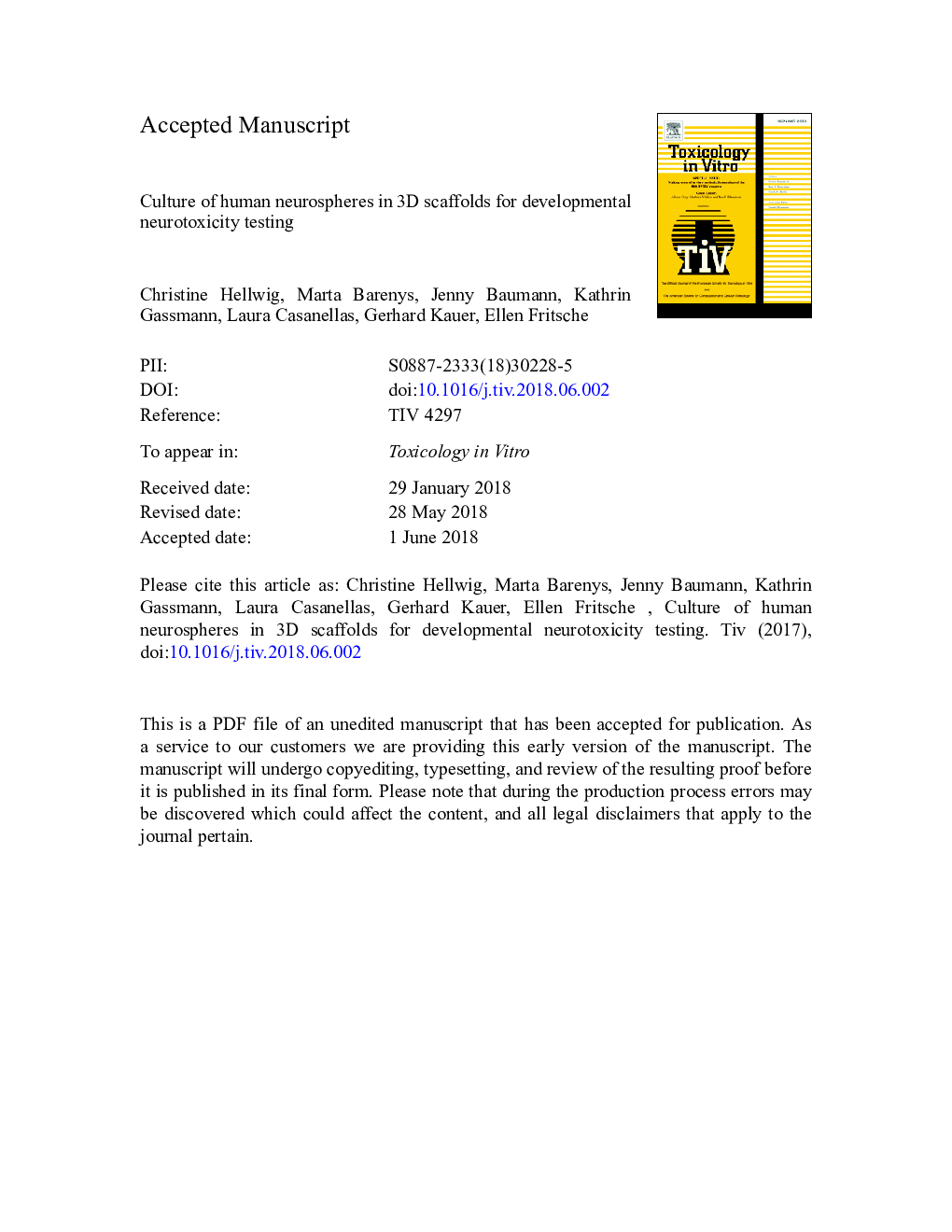| Article ID | Journal | Published Year | Pages | File Type |
|---|---|---|---|---|
| 8553839 | Toxicology in Vitro | 2018 | 34 Pages |
Abstract
Human neural progenitor cells cultured as neurospheres are a promising tool for developmental neurotoxicity testing in vitro. In order to obtain a human cell-based tissue culture system as close to the organ as possible, it is desirable to improve the spatial organization of the “Neurosphere Assay” and use 3D scaffolds to better mimic the in vivo three dimensional cell microenvironment. For this reason we have established the conditions for short-term culture (up to 6â¯days) in matrigel or in IKVAV-3 peptide-functionalized hydrogels, and for long-term culture (>25â¯days) in IKVAV-3 peptide-functionalized hydrogels showing that these conditions support human neural progenitor cells' migration, differentiation to neurons and formation of neuronal networks. Moreover, we assessed if neurospheres grown in 3D scaffolds allow for developmental neurotoxicity compound testing. At concentrations not affecting cell viability the known developmental neurotoxic compound MeHgCl inhibits migration of human neural progenitor cells grown in 3D scaffolds with a higher potency than when the same cells are cultured on a laminin-coated surface as secondary 3D structures. Thus, this work opens the door to functional assessment of compound effects on short- and long-term cultured human neurospheres embedded in 3D scaffolds for developmental neurotoxicity testing.
Keywords
EGFCrosslinkerRFUDNTPDLPFAFGFNPCsstandard error of the meanNeural progenitor cellsepidermal growth factorDevelopmental neurotoxicityfibroblast growth factorMatrigelSEMloss modulus Storage modulusMigrationNeurosphereHydrogelRelative Fluorescence Unitsparaformaldehydepolyethylene glycolPoly-d-lysinePEGPeptideMethylmercury chloride
Related Topics
Life Sciences
Environmental Science
Health, Toxicology and Mutagenesis
Authors
Christine Hellwig, Marta Barenys, Jenny Baumann, Kathrin Gassmann, Laura Casanellas, Gerhard Kauer, Ellen Fritsche,
